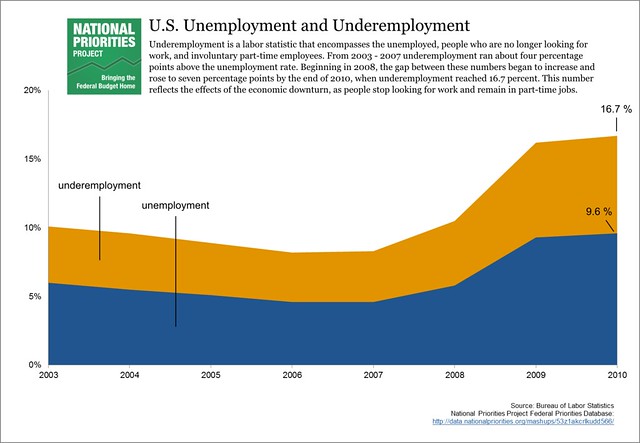Data Story: Unemployment Versus Underemployment
By
Becky Sweger
Posted:
|
Social Insurance, Earned Benefits, & Safety Net,
Transparency & Data
Our latest data story focuses on the differences between unemployment and underemployment and how a long-term economic downturn affects their relationship.
Although unemployment is the number most people use when evaluating the state of the U.S. labor force, it’s also interesting to consider underemployment, a statistic that includes people who are no longer looking for work and part-time workers who would rather have full-time jobs. Between 2003 and 2007, underemployment was, on average, close to four percentage points above the unemployment rate. Beginning in 2008, the gap between these numbers began to increase and rose to seven percentage points by the end of 2010, when underemployment reached 16.7 percent. This number reflects the effects of the economic downturn, as people stop looking for work and remain in part-time jobs.
View underemployment and unemployment, as well as notes and sources, here.
